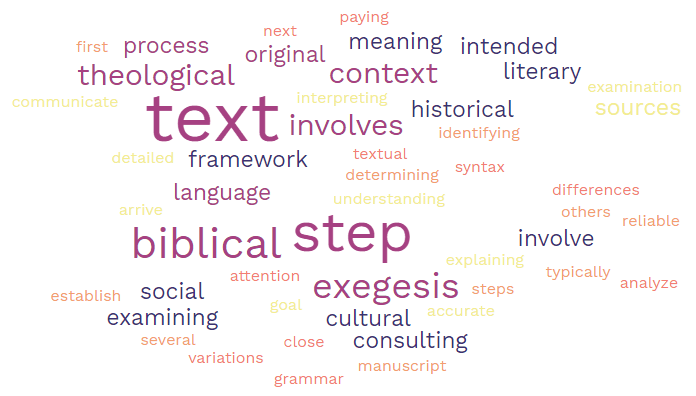
National Association of Christian Ministers Summary Series: Theology
Biblical exegesis is the process of interpreting and explaining a biblical text. It involves a detailed examination of the text in its original language, literary context, historical and cultural context, and theological framework. The goal of biblical exegesis is to arrive at an accurate understanding of the intended meaning of the text and to communicate that meaning to others.
The process of biblical exegesis typically involves several steps:
1. The first step is to establish the text, by determining the most reliable manuscript and identifying any textual variations or differences.
2. The next step is to analyze the text in its original language, paying close attention to grammar, syntax, and vocabulary. This includes examining the use of literary devices such as metaphors, allegories, and similes.
3. The third step is to investigate the historical and cultural context in which the text was written, including its author, intended audience, and social and political background. This step may involve consulting external sources such as archaeology, history, and literature.
4. The fourth step is to consider the theological framework of the text, by examining its relationship to other biblical texts and the overarching themes and doctrines of the Bible. This step may also involve consulting commentaries, theological treatises, and other secondary sources.
5. The final step is to apply the insights gained from the exegesis to contemporary life, by discerning the relevance and significance of the text for modern believers. This involves reflecting on the implications of the text for personal, social, and ethical issues, as well as for the church and society as a whole.





